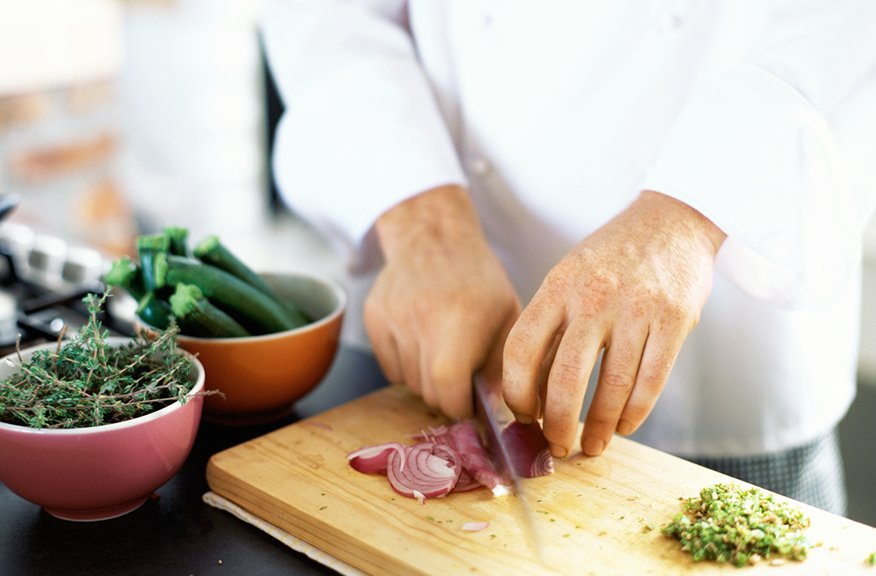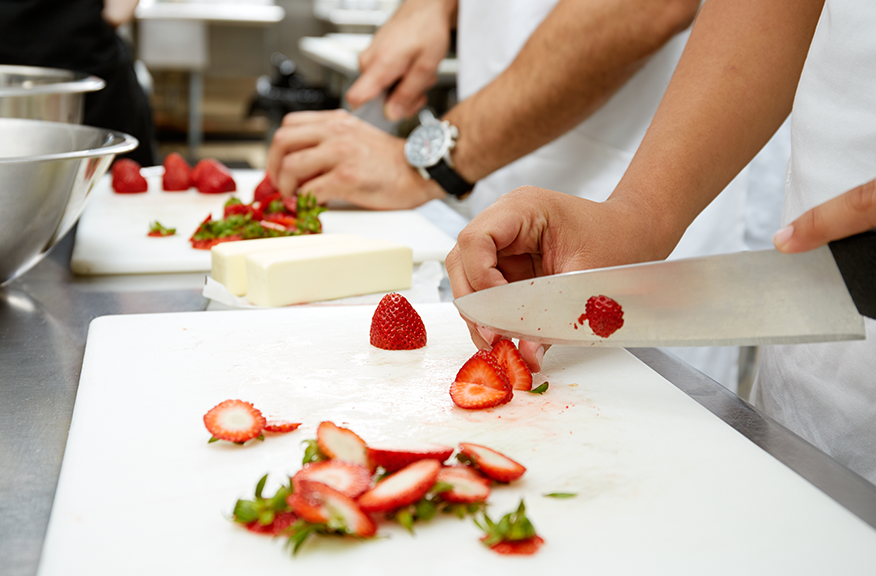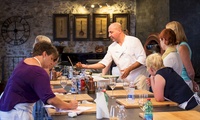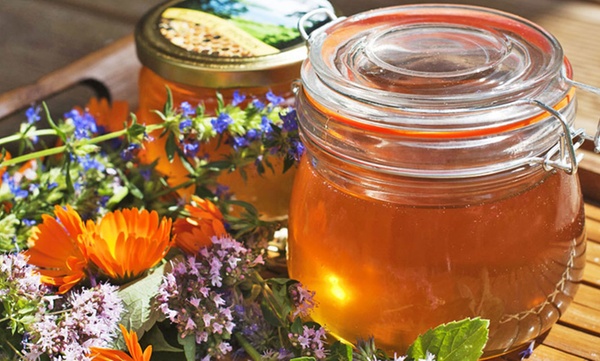GROUPON GUIDE TO COLUMBUS
I Took a Knife Skills Class in 2012 and Still Use What I Learned to This Day
BY: Colleen Loggins Loster |Jan 30, 2019
Cooking Classes Near You

Up to 79% Off Low-Carb Meal Subscriptions from Meals Maker
Sale Ends 4/27
$4.05 with_code GROUPON
Meals Maker

Up to 79% Off Vegetarian Meal Plans from Meals Maker
Sale Ends 4/27
$4.05 with_code GROUPON
Meals Maker Meal Plans

Master cooking and baking with this course for all skill levels
Sale Ends 4/27
$12.11 with_code GROUPON
IT University Online

Up to 90% Off on Certified Event Design Styling and Photograph
88% discount_off
C$9.60 with_code GROUPON
EventTrix

Master Knife Skills Online with Comprehensive Course
Sale Ends 4/27
$29.24 with_code GROUPON
Peach Academy

Pescatarian Meal Plans Subscriptions from Meals Maker
Sale Ends 4/27
$4.05 with_code GROUPON
Meals Maker

Up to 57% Off on Baking Course at Training Express
Sale Ends 4/27
$9.72 with_code GROUPON
Training Express

Vegan Meal Plan Monthly Subscription at Meals Maker
Sale Ends 4/27
$4.05 with_code GROUPON
Meals Maker

Dash Diet Meal Plans Subscriptions from Meals Maker
Sale Ends 4/27
$4.05 with_code GROUPON
Meals Maker

Up to 90% Off on Wine Making Course at EventTrix
88% discount_off
C$9.60 with_code GROUPON
EventTrix

Culinary Workshop with Professional Chef for 1 or 2 People
$69$62.10
Sale Ends 4/27
$55.89 with_code GROUPON
Wonderbox USA

Heart Health Meal Plans Subscription from Meals Maker
Sale Ends 4/27
$4.05 with_code GROUPON
Meals Maker

Online Diploma in Confectionary and Chocolate Making
Sale Ends 4/27
$30.78 with_code GROUPON
Peach Academy

30 Minute or Less Meal Plans Subscriptions from Meals Maker
Sale Ends 4/27
$4.05 with_code GROUPON
Meals Maker

Online Diploma in Cheese Making Course for Enthusiasts
Sale Ends 4/27
$29.24 with_code GROUPON
Peach Academy
More Deals on Cooking Classes

Trending
Explore Signature Cooking Classes for One, Two, or Four with Classpop!
765 N High Street, Columbus • 1.1 mi
Sale Ends 4/27
$52.65 with_code GROUPON
Cooking Classes by Classpop!

Trending
Join Hands-on Pizza Cooking Classes for Solo or Duo Fun!
702 S High St,, Columbus • 1.1 mi
Sale Ends 4/27
$52.65 with_code GROUPON
Pizza Making Classes by CocuSocial

Trending
$153.42 Off Baking Online Course from Centre of Excellence
Sale Ends 4/27
$4.05 with_code GROUPON
Centre of Excellence

Up to 38% Off Sushi-Making Classes for One, Two, or Four at Classpop!
765 N High Street, Columbus • 1.1 mi
Sale Ends 4/27
$52.65 with_code GROUPON
Sushi Making Class with Classpop!

Master Vegan Cooking with a Comprehensive Online Course
Sale Ends 4/27
$4.05 with_code GROUPON
Centre of Excellence

Online Cannabis Edibles Course and Certificate for One or Two
Sale Ends 4/27
$6.48 with_code GROUPON
Expert Skills Courses

Master Baking Sourdough & Healthy Cooking from Skill Success
Sale Ends 4/27
$3.24 with_code GROUPON
SkillSuccess eLearning

Budget Friendly Meal Plans Subscriptions from Meals Maker
Sale Ends 4/27
$4.05 with_code GROUPON
Meals Maker

Beginners Guide To Layer Cake And Cake Decorating
Sale Ends 4/27
$8.10 with_code GROUPON
330+ bought
SkillSuccess eLearning

Clean Eating Meal Plan Monthly Subscriptions at Meals Maker
Sale Ends 4/27
$4.05 with_code GROUPON
Meals Maker

Discover the Joys of French Baking: Macarons, Croissants and Pastries!
Sale Ends 4/27
$8.10 with_code GROUPON
420+ bought
SkillSuccess eLearning

Mediterranean Meal Subscriptions from Meals Maker
Sale Ends 4/27
$4.05 with_code GROUPON
Meals Maker

Quick and Healthy Meal Plans Subscriptions from Meals Maker
Sale Ends 4/27
$4.05 with_code GROUPON
Meals Maker

Gluten Free Meal Plans Subscriptions from Meals Maker
Sale Ends 4/27
$4.05 with_code GROUPON
Meals Maker

Paleo Meal Plans Subscriptions from Meals Maker
Sale Ends 4/27
$4.05 with_code GROUPON
Meals Maker
 Between the steak knife and the sultry "Ghost"-style instruction, this is NOT the right way to cut an onion. These stock models could really use a lesson in
Between the steak knife and the sultry "Ghost"-style instruction, this is NOT the right way to cut an onion. These stock models could really use a lesson in  This is the right way to cut an onion. Notice that the chef is using a chef's knife and is keeping the fingers on his non-knife hand curled under to protect them while chopping.
This is the right way to cut an onion. Notice that the chef is using a chef's knife and is keeping the fingers on his non-knife hand curled under to protect them while chopping. It's a bit intense to cut strawberries with a chef's knife. Instead, reach for your paring knife to make quick work of them.
It's a bit intense to cut strawberries with a chef's knife. Instead, reach for your paring knife to make quick work of them.




